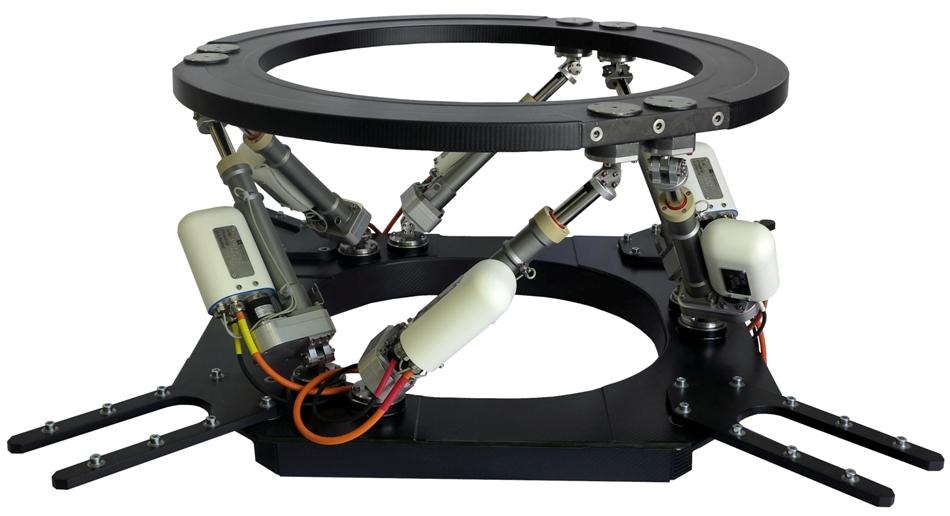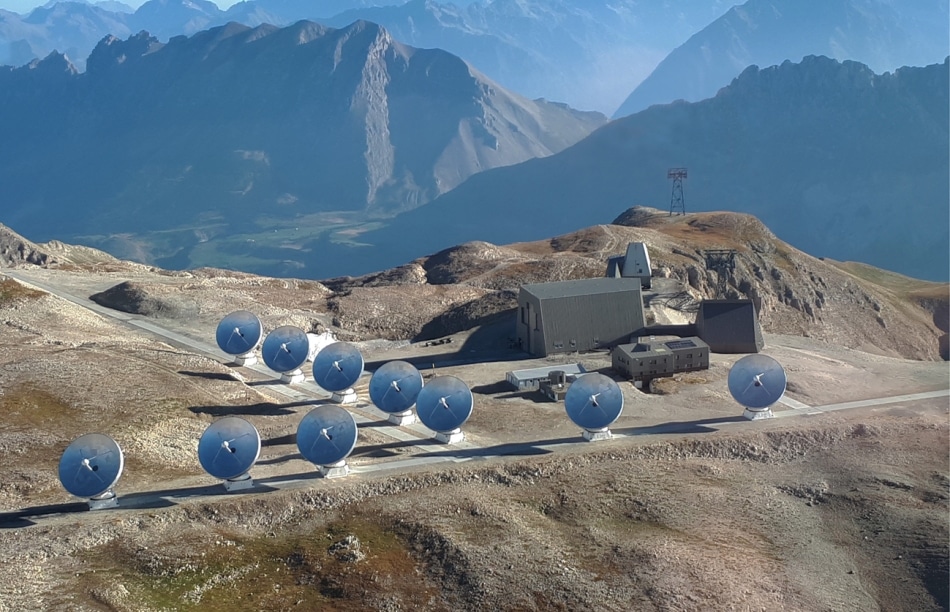Symetrie has been chosen to provide the subreflector positioners for the twelve antennas of the NOEMA telescope located in the French Alps.

Developed and operated by IRAM, an international research institute for radio astronomy, NOEMA will be the most powerful millimeter radiotelescope in the Northern hemisphere with the addition of six new antennas, bringing their total number from six to twelve.
The subreflector is the equivalent of a secondary mirror on an optical telescope, it will return the millimeter waves collected by the primary reflector towards the receiver, which will then analyze the obtained images to study the origins and evolution of the Universe.
In collaboration with IRAM, Symetrie designed a specific precision positioning system based on the standard BREVA hexapod following these main objectives: reliability in a high mountain environment, mechanical performance, light weight, easy maintenance and controlled costs.
The main features of this hexapod are its large travel ranges, its carbon fiber platforms and the optimized thermal design of the subreflector-support assembly. The improvement of the deformations under thermal stress is significant thanks to a specific thermomechanical decoupling device made from Invar. Invar is an alloy of iron and nickel known for its very low coefficient of thermal expansion of 1 μm/m/°C.
Initially, Symetrie realized a first hexapod that passed accelerated aging tests in climatic chamber and a complete winter at the top of the Bure plateau to evaluate the resistance of the system and its components under particularly harsh environmental conditions.
After the successful tests on the first hexapod, IRAM decided to equip the rest of the new antennas as well as the old ones on the basis of the tested hexapod model. Thus twelve Symetrie hexapods will be installed on NOEMA by 2022.

CREDITS: IRAM - F. GUETH